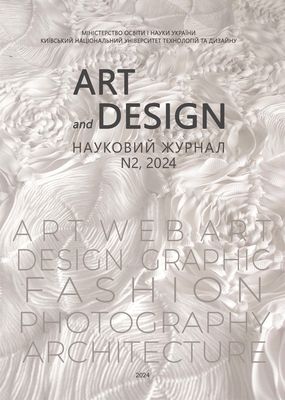STRATEGY OF DESIGN ONLINE MUSEUM EXHIBITION CONTENTS FROM THE PERSPECTIVE OF ARTIFICIAL INTELLIGENCE
DOI:
https://doi.org/10.30857/2617-0272.2024.2.8Keywords:
cultural heritage, personalization strategies, technological integration, user experience, online museum design, artificial intelligenceAbstract
Purpose: analyzes the use of artificial intelligence to improve artistic design in online museum exhibitions.
Methodology. The work combines a literature review with an analysis of design examples of online museums using artificial intelligence technologies. In particular, the following online museum cases were analyzed: the British Museum (England), the Louvre (France), the Shanghai Museum (China), the Vatican Museum (Vatican), as well as the Mei Lanfang digital project.
The results. As a result of the analysis, it was found that artificial intelligence has a profound effect on the artistic components of digital museum exhibits. Outlined, AI tools can dynamically adapt visual content and design elements, enriching the artistic narrative and aligning with the viewer's preferences to create more engaging visual experiences.
Scientific novelty. In the article, the principles of using artificial intelligence in artistic design processes in online museums were characterized for the first time. Systematized principles of combining artificial intelligence with artistic design as new methods for increasing the aesthetic consistency and thematic richness of online museum exhibitions.
Practical significance. The findings highlight the transformative potential of artificial intelligence in digital art presentations in online museums, particularly through its ability to improve key design elements such as color schemes, typography and user interface. The practical conclusions and recommendations formulated in the work are aimed at creating a design of more visually attractive and artistically rich online museums.

